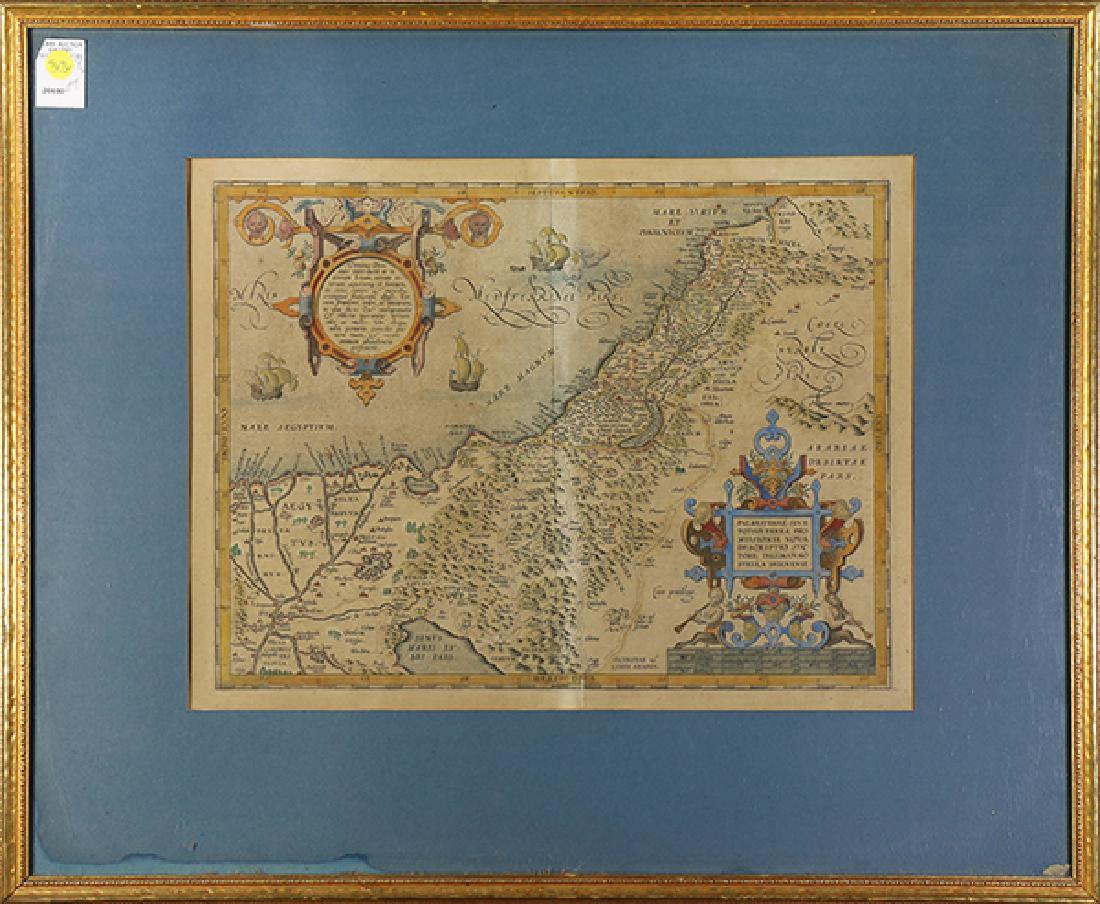

Additionally, the billowing clouds in the background, while a minor decoration are visually appealing to a potential buyer. Additionally, Ortelius stylized his map with thick decorative embellishments seen enclosing the title border and near the bottom cartouche. The Typus Orbis Terrarum was significant in the field of cartography for it provided the basis for future productions of world maps. The Typus Orbis Terrarum is one of the most well-known maps ever created and laid the foundation for future generations of mapmakers. Today, we know this to be Antarctica, but during the 16th century it was widely believed that there was an unknown, imaginary, southern continent near the south pole to balance the continents in the Northern Hemisphere.

Upon viewing the Typus Orbis Terrarum, one glaring mistake can be observed, the large southern continent. In this world map, the costal outlines of the continents are shaped like puzzle-pieces to illustrate his theory. Ortelius hypothesized that the Earth’s lands split from a previous supercontinent and was the first to illustrate the idea of Continental Drift in the Typus Orbis Terrarum. Abraham Ortelius based the Typus Orbis Terrarum around his good friend Gerhardus Mercator’s map of 1569, Giacomo Gastaldi’s 1561 map, and Diego Gutierrez’ 1652 portolan map of the Atlantic coastlines.

First published in Abraham Ortelius’s atlas, Theatrum Orbis Terrarum, it was one of the few maps included in the atlas that was created by Ortelius himself. The clear intention was to maintain secrecy over new discoveries and control over the distribution of cartographic material, not always successfully, as it happened pilots and navigators seem to have changed allegiance with impunity and, in consequence, many of the earliest and most informative charts were compiled as far away as Genoa, Venice, Florence and Ancona, presumably from sources outside the Portuguese and Spanish \'Casas\'.It is apparent that few manuscripts reached the printing stage and, indeed, are so rare that any study of them must be regarded as a specialist subject.The Typus Orbis Terrarum, “The Plan of the World’s Lands,” was the first world map to be published in a ‘modern’ standard atlas by Abraham Ortelius and engraved by Frans Hogenberg in 1570. Many of the original charts and maps drawn by the first Portuguese and Spanish navigators have survived for the very good reason that, on completion of their voyages, pilots were obliged to hand over their manuscript notes to the Casa da India (founded 1504) in Lisbon or to the equivalent Casa de Contrataci6n de las Indias (founded 1504) in Seville. Plate area: - Small repair adjacent to bottom centerfold, no loss

Paper thickness and quality: - Heavy and stable According to Marcel Van den Broecke there are estimated to be only 155 loose copies in circulation today. Ortelius published a total of 8175 of this map between 1570 to 1641 in 4 States. This beautifully hand coloured original antique map of Spain & Portugal, 1st edition - based on the cartographic work of Charles de L Escluse - was published by Abraham Ortelius in the 1574 Latin edition of Theatrum Orbis Terrarum. Title : Regni Hispaniae Post Omnium Editiones Locvplessima Descriptio.


 0 kommentar(er)
0 kommentar(er)
